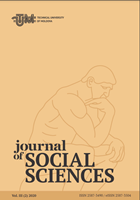LEVELS OF TEXT ANALYSIS IN THE HIERARCHY OF LINGUISTIC UNITS
LEVELS OF TEXT ANALYSIS IN THE HIERARCHY OF LINGUISTIC UNITS
Author(s): Corina TintiucSubject(s): Syntax, Semantics, Descriptive linguistics
Published by: Universitatea Tehnică a Moldovei
Keywords: anaphora; coherence; cohesion; connectors; hierarchy; rhema; theme;
Summary/Abstract: Language is envisioned as an organic system of linguistic units. There are 7 linguistic units. The text is at the top of the syntactic hierarchy. It is best regarded as a semantic unit. Motivated by the intention to provide information, the text oscillates between continuity and expansion. Continuity concerns the known element → "the theme" while the expansion brings a new element → "the rheme". The development of the information is visible through textual means of cohesion: connectors, anaphora, word order, and determiners. Cohesion and coherence are “text - centered notions”. The means of coherence include: logical relations such as causality and class inclusion; knowledge of how events, actions, objects, and situations are organized, and the striving for continuity in human experience. There are two aspects of coherence, namely, situational coherence and generic coherence. Cohesion is the result of "semantic ties", which refers to the dependent links between items within a text. These ties come together to create meaning. Cohesion and coherence are two standards of textuality, without them, the text will not be communicative.
Journal: Journal of Social Sciences
- Issue Year: III/2020
- Issue No: 2
- Page Range: 68-79
- Page Count: 12
- Language: French

